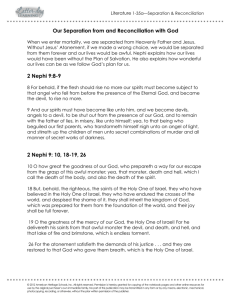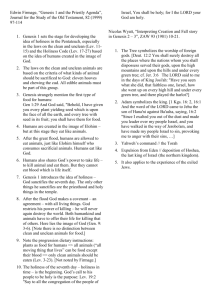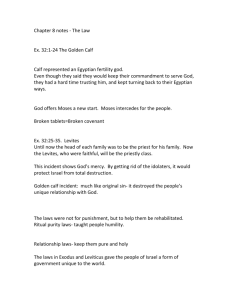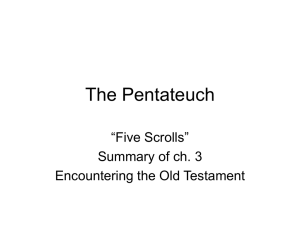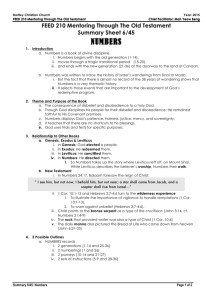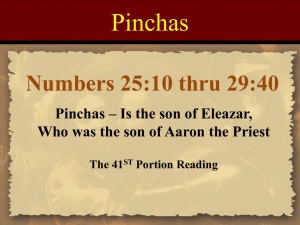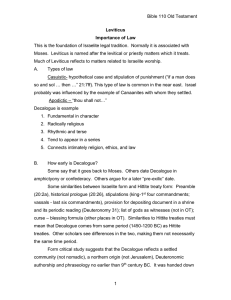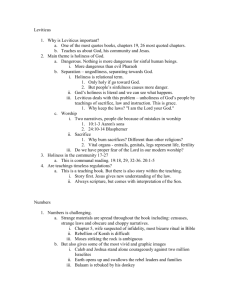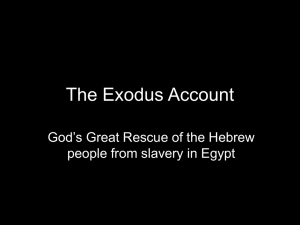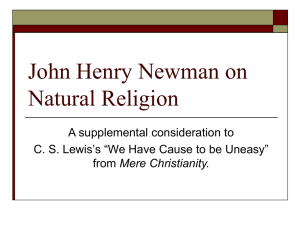Overview of Leviticus 1. Name. Leviticus: Hebrew name is based on
advertisement
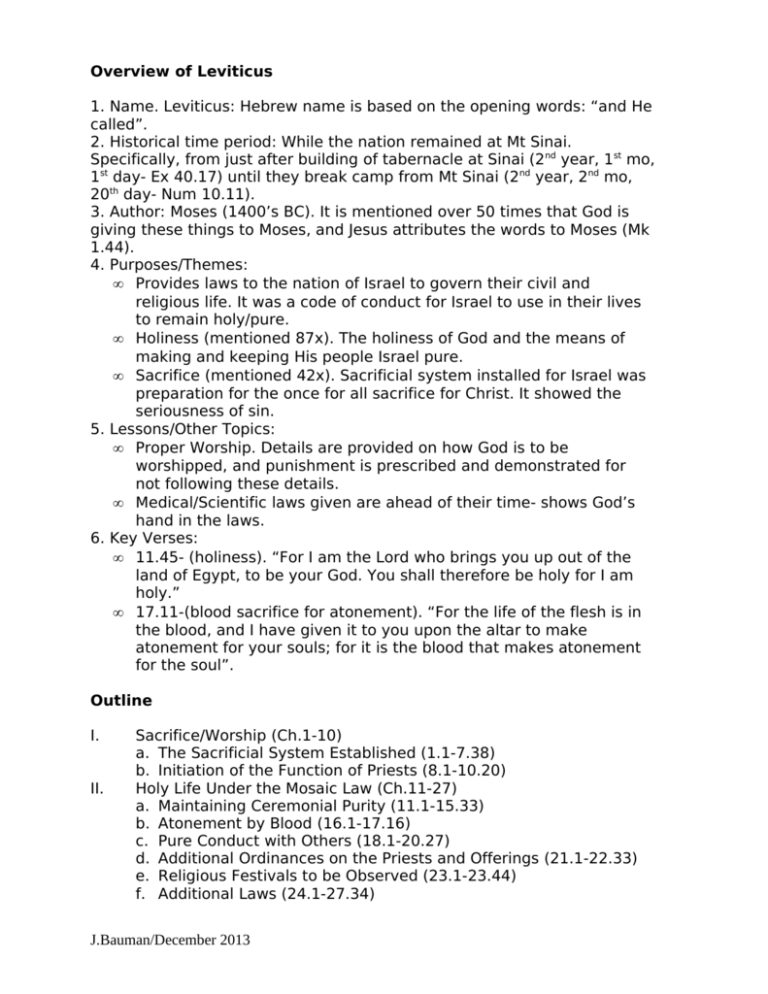
Overview of Leviticus 1. Name. Leviticus: Hebrew name is based on the opening words: “and He called”. 2. Historical time period: While the nation remained at Mt Sinai. Specifically, from just after building of tabernacle at Sinai (2nd year, 1st mo, 1st day- Ex 40.17) until they break camp from Mt Sinai (2nd year, 2nd mo, 20th day- Num 10.11). 3. Author: Moses (1400’s BC). It is mentioned over 50 times that God is giving these things to Moses, and Jesus attributes the words to Moses (Mk 1.44). 4. Purposes/Themes: • Provides laws to the nation of Israel to govern their civil and religious life. It was a code of conduct for Israel to use in their lives to remain holy/pure. • Holiness (mentioned 87x). The holiness of God and the means of making and keeping His people Israel pure. • Sacrifice (mentioned 42x). Sacrificial system installed for Israel was preparation for the once for all sacrifice for Christ. It showed the seriousness of sin. 5. Lessons/Other Topics: • Proper Worship. Details are provided on how God is to be worshipped, and punishment is prescribed and demonstrated for not following these details. • Medical/Scientific laws given are ahead of their time- shows God’s hand in the laws. 6. Key Verses: • 11.45- (holiness). “For I am the Lord who brings you up out of the land of Egypt, to be your God. You shall therefore be holy for I am holy.” • 17.11-(blood sacrifice for atonement). “For the life of the flesh is in the blood, and I have given it to you upon the altar to make atonement for your souls; for it is the blood that makes atonement for the soul”. Outline I. II. Sacrifice/Worship (Ch.1-10) a. The Sacrificial System Established (1.1-7.38) b. Initiation of the Function of Priests (8.1-10.20) Holy Life Under the Mosaic Law (Ch.11-27) a. Maintaining Ceremonial Purity (11.1-15.33) b. Atonement by Blood (16.1-17.16) c. Pure Conduct with Others (18.1-20.27) d. Additional Ordinances on the Priests and Offerings (21.1-22.33) e. Religious Festivals to be Observed (23.1-23.44) f. Additional Laws (24.1-27.34) J.Bauman/December 2013
